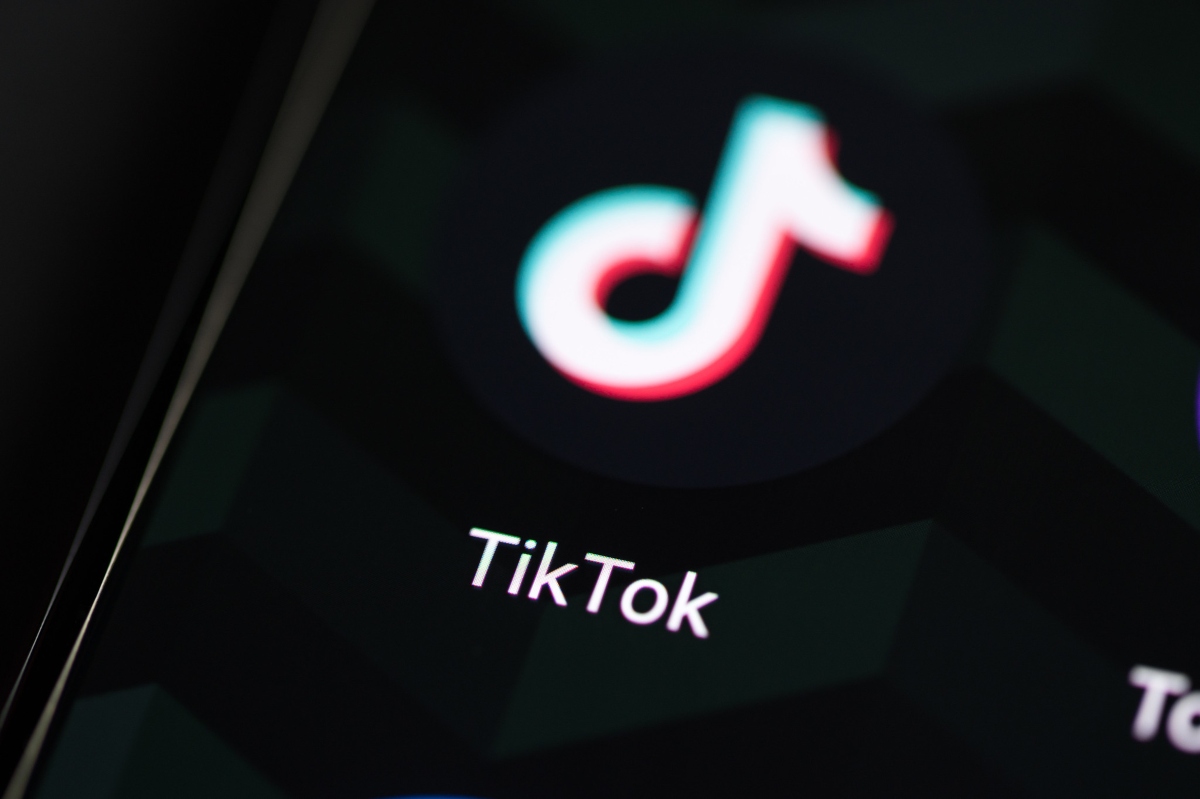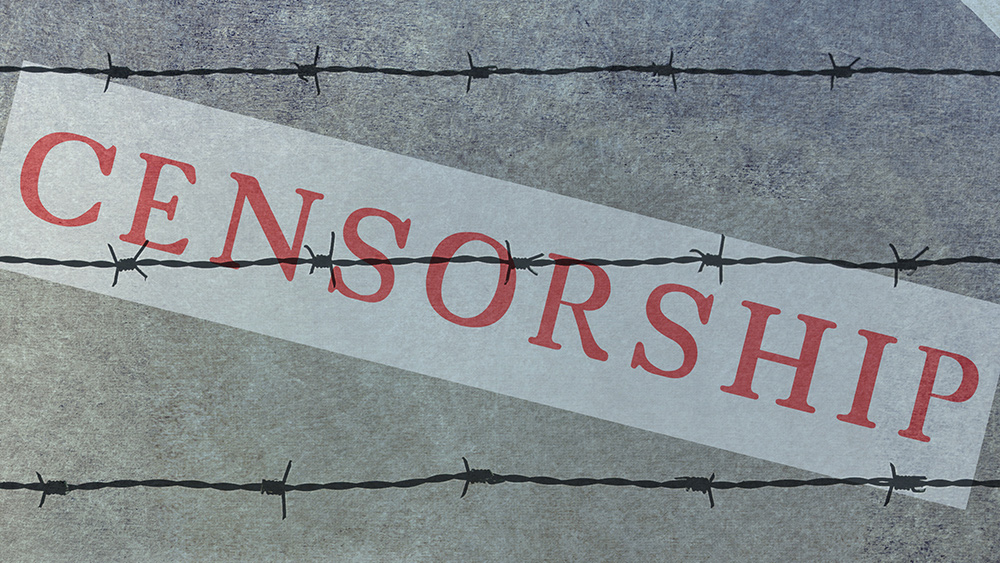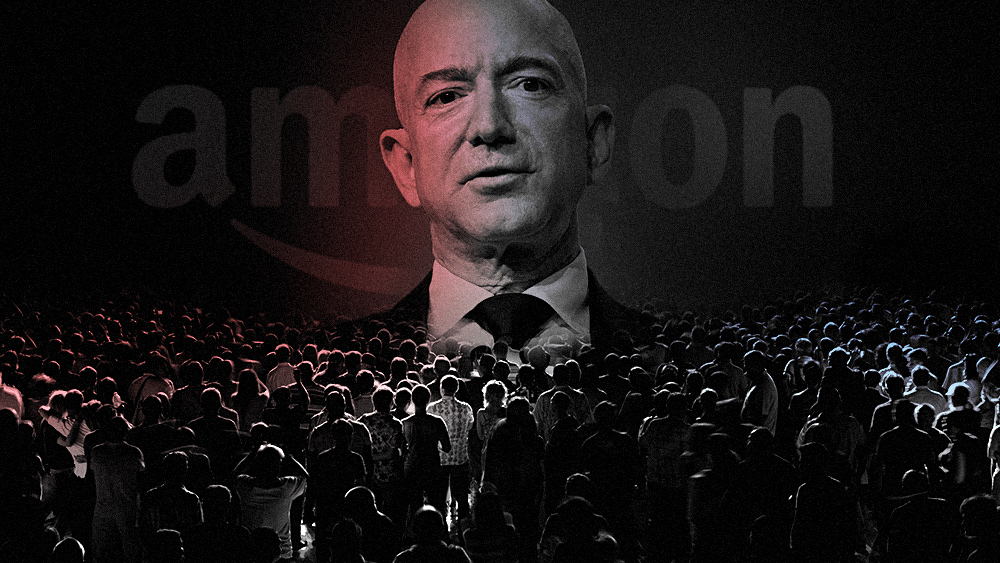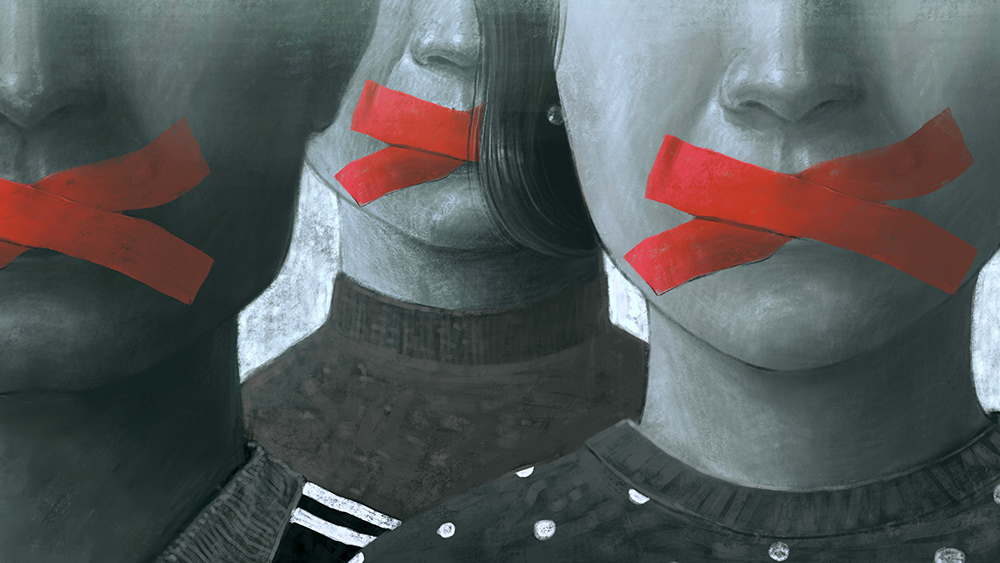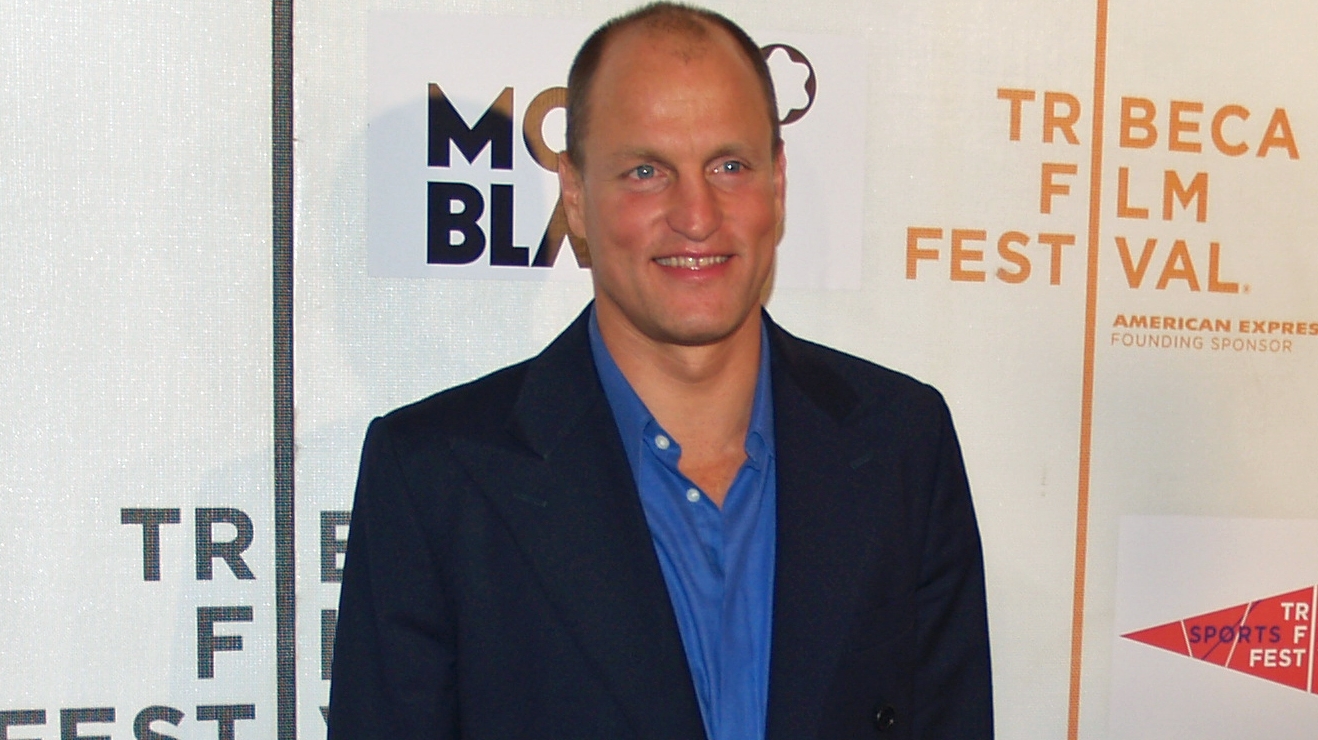‘The great COVID-19 lie machine’: Stanford University project colluded with feds, social media to censor ‘misinformation’
04/03/2023 / By News Editors

A project run by Stanford University served as a “dry run” for President Biden’s “disinformation” board, according to journalist Matt Taibbi’s latest “Twitter files” release, which he dubbed, “The Great Covid-19 Lie Machine: Stanford, the Virality Project, and the Censorship of ‘True Stories.’”
(Article by Michael Nevradakis, Ph.D. republished from ChildrensHealthDefense.org)
According to Taibbi, the Virality Project, an initiative of the Stanford Internet Observatory, called for the creation of a disinformation board just one day before Biden announced plans to launch his government-run Disinformation Governance Board.
Taibbi discussed the two main takeaways from his March 17 “Twitter files” release during the “America This Week” podcast, co-hosted by novelist Walter Kirn.
According to Taibbi:
“Stanford, with the backing of a number of partners and some government agencies, had created a cross-platform single digital ticketing system that was processing censorship requests for all of them: Facebook, Google, TikTok, YouTube, Pinterest, Medium, Twitter.”
Also, Taibbi said, the Virality Project was “defining true things as disinformation or misinformation or malformation,” which he said signifies “a new evolution of the disinformation process away from trying to figure out what’s true and what’s not and just going directly to political narrative.”
Taibbi, along with author Michael Shellenberger, who contributed to prior “Twitter files” releases, testified March 9 at the U.S. House of Representatives’ Select Subcommittee on the Weaponization of the Federal Government, revealing some of what he had discovered about the Virality Project.
Taibbi and his team of researchers discovered a tranche of Virality Project emails just an hour before his scheduled House testimony March 9, revealing the monitoring of “billions of social media posts by Stanford University, federal agencies, and a slew of (often state-funded) NGOs [non-governmental organizations].”
5.Just before @ShellenbergerMD and I testified in the House last week, Virality Project emails were found in the #TwitterFiles describing “stories of true vaccine side effects” as actionable content. pic.twitter.com/dKxTnxDc3a
— Matt Taibbi (@mtaibbi) March 17, 2023
Calls for a government-run ‘rumor control’ mechanism
As previously reported by The Defender, the Virality Project claimed its objective “is to detect, analyze, and respond to incidents of false and misleading narratives related to COVID-19 vaccines across online ecosystems.”
Formerly known as the Election Integrity Partnership, it was directed by Alex Stamos, director of the Stanford Internet Observatory and a “cybersecurity expert” who once served as Facebook’s chief security officer.
The project says it provides “actionable situational awareness and response capabilities for public health officials and other partners on the front lines of providing accurate vaccine-related information to the public.”
But behind this rhetoric lay a vast network of high-level interactions with the federal government and social media platforms — which included proposals, ultimately adopted, for the U.S. government to establish its own “disinformation” board.
According to Taibbi, the partnership between the Virality Project and the government began in earnest in February 2021, days after Biden took office.
The relationship blossomed quickly. Within a year, on April 26, 2022, the Virality Project proposed a “rumor-control mechanism” and a “Misinformation and Disinformation Center of Excellence” be established at the federal level.
28.After about a year, on April 26, 2022, the VP issued a report calling for a “rumor-control mechanism to address nationally trending narratives,” and a “Misinformation and Disinformation Center of Excellence” to be housed within CISA, at the Department of Homeland Security. pic.twitter.com/YmWQtZmoL3
— Matt Taibbi (@mtaibbi) March 17, 2023
The next day, Alejandro Mayorkas, secretary of the U.S. Department of Homeland Security (DHS) announced the formation of the “Disinformation Governance Board.”
Taibbi tweeted:
29. The next day, April 27, 2022, DHS Secretary Alejandro Mayorkas announced in a House Appropriations Subcommittee hearing that a “Disinformation Governance Board” had been created, to be headed by the singing censor, Nina Jankowitz. https://t.co/OwWF7PW1Ct
— Matt Taibbi (@mtaibbi) March 17, 2023
The “Center of Excellence” proposal, which remains on the Virality Project’s website, states:
“Because of the dynamic threat that mis- and disinformation poses to national security, we recommend the creation of a federal Center of Excellence for mis- and disinformation housed in the Department of Homeland Security’s CISA [Cybersecurity and Infrastructure Security Agency].”
The center would be charged with pursuing “three main goals”:
- To serve as a single federal center for the expertise and capabilities necessary lead mis- and disinformation resilience and countering efforts;
- To coordinate mis- and disinformation countering efforts at the federal level and in support of state and local government efforts as well as the private sector; and
- To play a leading role in building capacity inside government, as well as in civil society and the private sector, to increase resilience to mis- and disinformation.
According to the proposal, “The evolution of mis- and disinformation demonstrates that further coordinated and decisive action must be taken by all levels of government in partnership with academia, nonprofits and the private sector to build resilience among the American people against weaponized falsehoods online.”
The Virality Project’s final report, published Feb. 18, 2022, also contained a proposal for a “Center of Excellence.” There, it recommends the federal government “Implement a Misinformation and Disinformation Center of Excellence housed within the Cybersecurity and Infrastructure Security Agency.”
Contained within the same final report is a proposal for the government to “Establish a rumor-control mechanism to address nationally trending narratives.”
A separate Feb. 18, 2022, document — “White House COVID-19 Vaccine Communication Plan: Analysis and Recommendations” — also detailed plans for a center of excellence and a “centralized rumor control page.”
The project’s proposal drew from lessons apparently learned from the 2020 U.S. presidential election, and called for pro-vaccine narratives to be tailored for specific communities:
“In the 2020 election, the Cybersecurity and Infrastructure Security Agency (CISA) demonstrated that a centralized rumor control page could counter online misinformation. That page can be replicated for vaccine misinformation.
“Local health communicators can then adapt this centralized public messaging to the needs of their specific communities.”
At least one U.S. government agency appears to have adopted the Virality Project’s recommendation regarding the establishment of a “rumor control” initiative.
As previously reported by The Defender, the U.S. Food and Drug Administration (FDA) inaugurated its own “Rumor Control” initiative Aug. 5, 2022, as part of its broader efforts to counter “misinformation” and “disinformation.”
“The growing spread of rumors, misinformation and disinformation about science, medicine, and the FDA, is putting patients and consumers at risk,” according to the FDA’s Rumor Control webpage. “We’re here to provide the facts.”
On the Virality Project’s website, a dedicated page on “Rumor Control” states:
“This approach to debunking misinformation draws on literature suggesting that debunking messages coming from rumor control centers can help prevent rumor spread.
“Psychologists have concluded that messengers that are perceived as having high trustworthiness and expertise are most effective at debunking falsehoods, meaning a debunking approach that aggregates facts from trusted subject matter experts could be ideal.”
The Virality Project also states that, “Strong partnerships with community-specific subject matter experts and liaisons are critical to this workflow. Partners can include state and local government offices, civil society members, NGOs, and individual organizers” who “will also be the core amplifiers of Rumor Control postings to each target audiences.”
Targeting vaccine narratives to specific communities closely mirrors the efforts of a Rockefeller and National Science Foundation initiative, the Mercury Project.
This initiative will issue three-year research grants to estimate “the causal impacts of mis- and disinformation on online and offline outcomes in the context of the COVID-19 pandemic,” including “differential impacts across socio-demographic groups.”
The Virality Project also focused on targeting specific groups. It recommended strategies to public health communicators for overcoming vaccine hesitancy, including “working with community leaders in minority and immigrant communities to increase awareness of how to get the vaccine and why.”
The coordinated reporting of ‘misinformation’ across multiple platforms
Friday’s “Twitter files” release also focused on how the Virality Project helped bring multiple social media sites into a common ticketing system, where content and users could be reported and those reports shared across multiple platforms.
According to Taibbi, the Virality Project “encouraged platforms to target people, not posts, using “Minority Report”-style “pre-crime logic,” and described “repeat offenders” such as Robert F. Kennedy, Jr., chairman and chief litigation counsel of Children’s Health Defense (CHD), who post a “large volume of content that is almost always reportable.”
22.”ALMOST ALWAYS REPORTABLE” It encouraged platforms to target people, not posts, using Minority Report-style “pre-crime” logic. Describing “repeat offenders” like Robert Kennedy, Jr., it spoke of a “large volume of content that is almost always reportable.” pic.twitter.com/kHhFEZhN8D
— Matt Taibbi (@mtaibbi) March 17, 2023
This system “worked with government to launch a pan-industry monitoring plan for COVID-related content,” Taibbi wrote.
“Though the Virality Project reviewed content on a mass scale for Twitter, Google/YouTube, Facebook/Instagram, Medium, TikTok, and Pinterest, it knowingly targeted true material and legitimate political opinion, while often being factually wrong itself,” Taibbi said.
In March 2021, the Virality Project began to “ramp up” these efforts, providing “visibility” to “alternative platforms such as Gab, Parler, Telegram, and Gettr,” in what Taibbi described as “near-total surveillance of the social media landscape.”
Speaking Friday on the “America This Week” podcast, Taibbi likened this to a social credit score system, saying:
“You could say something and get banned for it on one platform, and now all the other platforms know about that. And so, your history will be fed into this big computer. It’s kind of like the social credit score system.”
According to the Virality Project’s final report, it sought to develop a “whole-of-society effort … in which stakeholders build robust and persistent partnerships to ensure that significant high-harm claims can be addressed as they arise,” by bringing together research institutions, public health “partners,” government “partners” and platforms.
6.We’ve since learned the Virality Project in 2021 worked with government to launch a pan-industry monitoring plan for Covid-related content. At least six major Internet platforms were “onboarded” to the same JIRA ticketing system, daily sending millions of items for review.
— Matt Taibbi (@mtaibbi) March 17, 2023
On his podcast, Taibbi suggested such collusion between the Virality Project and multiple social media platforms “would be an antitrust issue.” In fact, on Jan. 10, CHD and others sued the Trusted News Initiative and its founders, including the BBC, The Associated Press, Reuters and The Washington Post, for colluding to exclude non-establishment COVID-19-related narratives.
“Reportable” content, according to the Virality Project, even included information straight from government agencies such as the Centers for Disease Control and Prevention (CDC), on the basis of who was sharing it and the political narrative they espoused, according to Taibbi:
25.Later, when “the CDC changed its methodology for counting Covid-19 cases among vaccinated people,” only counting those resulting in hospitalization or death, VP complained that “anti-vaccine” accounts RFK Jr. and “WhatsHerFace” retweeted the story to suggest “hypocrisy.” pic.twitter.com/7Y3NnkkP2d
— Matt Taibbi (@mtaibbi) March 17, 2023
Other examples of social media content targeted by the Virality Project and shared by Taibbi include:
- “The release of Dr. Anthony Fauci’s Spring 2020 emails… has been used to exacerbate distrust in Dr. Fauci.” “Increased distrust in Fauci’s expert guidance.”
- “Reports of vaccinated individuals contracting COVID-19 anyway”; “natural immunity”; suggesting COVID-19 “leaked from a lab”; even “worrisome jokes.”
According to Taibbi, the Virality Project was influential in Twitter changing its COVID-19 content policies “in partnership with the CDC.”
13.Through July of 2020, Twitter’s internal guidance on Covid-19 required a story be “demonstrably false” or contain an “assertion of fact” to be actioned. But the Virality Project, in partnership with the CDC, pushed different standards. pic.twitter.com/K23SpK9SgJ
— Matt Taibbi (@mtaibbi) March 17, 2023
On Feb. 17, 2021, Twitter joined the Virality Project, instructing Twitter executives like Yoel Roth, then-head of Trust and Safety at Twitter, on how to join the common ticketing system.
Twitter also began receiving weekly reports on “anti-vax disinformation,” which, according to Taibbi, “contained numerous true stories.”
The Virality Project told Twitter that “true stories,” including “celebrity deaths after vaccine,” could “fuel hesitancy” and should be considered “Standard Vaccine Information on Your platform.”
14.VP told Twitter that “true stories that could fuel hesitancy,” including things like “celebrity deaths after vaccine” or the closure of a central NY school due to reports of post-vaccine illness, should be considered “Standard Vaccine Misinformation on Your Platform.” pic.twitter.com/nOyuw2r5cH
— Matt Taibbi (@mtaibbi) March 17, 2023
Referring to the “vaccine passport narrative,” for instance, the Virality Project wrote that “concerns” over such proposals “have driven a larger anti-vaccination narrative about the loss of rights and freedoms.”
The Virality Project framed such “concerns” as “misinformation” — and Twitter appears to have followed suit.
According to Taibbi, “By March of 2021, Twitter personnel were aping VP [Virality Project] language, describing ‘campaigns against vaccine passports,’ ‘fear of mandatory immunizations,’ and ‘misuse of official reporting tools’ as ‘potential violations.’”
15. In one email to Twitter, VP addressed what it called the “vaccine passport narrative,” saying “concerns” over such programs “have driven a larger anti-vaccination narrative about the loss of rights and freedoms.”
This was framed as a “misinformation” event. pic.twitter.com/ZdbKE1tFac— Matt Taibbi (@mtaibbi) March 17, 2023
The Virality Project also “routinely framed real testimonials about side effects as misinformation, ranging from ‘true stories’ of blood clots from AstraZeneca vaccines to a New York Times story about vaccine recipients who contracted the blood disorder thrombocytopenia,” according to Taibbi.
Twitter — in conjunction with the U.S. State Department’s Global Engagement Center — went on to brand numerous accounts that posted “legitimate and accurate COVID-19 updates” but which “attacked” U.S. and European politicians, as “Russia-linked.”
Even pro-COVID-19-restriction politicians, such as former Italian Prime Minister Giuseppe Conte, were accused of being part of such “Russia-linked” networks. Conte is currently being investigated in Italy for not imposing a lockdown quickly enough in March 2020, according to Politico.
The Virality Project also gauged “audience response” as a means to ascertain whether content posted on social media qualified as “disinformation” or not. In one example:
20.The Virality Project helped pioneer the gauging of “disinformation” by audience response. If the post-vaccine death of a black woman named Drene Keyes in Virginia went unnoticed inspired mostly “anti-vaccine” comments on local media, it became a “disinformation” event. pic.twitter.com/R5zNyKkEQ3
— Matt Taibbi (@mtaibbi) March 17, 2023
From the point of view of the Virality Project, even “just asking questions” was a tactic “commonly used by spreaders of misinformation,” while a “Worldwide Rally for Freedom planned over Telegram” was itself branded “a disinformation event.”
In another email to Twitter about “misinformation,” the Virality Project said it wanted to “hone in” on an “increasingly popular narrative about natural immunity,” while describing “breakthrough” infections as “extremely rare events” that should not be inferred to mean “vaccines are ineffective.”
A few months later though, the Virality Project conceded that “breakthrough cases are happening.”
https://t.co/ZJFh45HlyD a chilling irony, the VP ran searches for the term “surveillance state.” As an unaccountable state-partnered bureaucracy secretly searched it out, the idea that “vaccines are part of a surveillance state” won its own thoughtcrime bucket: “conspiracy.” pic.twitter.com/KTJpzIBspx
— Matt Taibbi (@mtaibbi) March 17, 2023
Anyone posting content on social media suggesting vaccines and vaccine passports are components of a “surveillance state” did not escape observation by the Virality Project. According to Taibbi, the organization “ran searches for the term ‘surveillance state,’” categorizing such content as “conspiracy.”
Even while conceding that “breakthrough infections were happening,” the Virality Project’s final report continued to claim that “it was misinformation to suggest the vaccine does not prevent transmission, or that governments are planning to introduce vaccine passports,” even though “Both things turned out to be true,” Taibbi said.
30.Even in its final report, VP claimed it was misinformation to suggest the vaccine does not prevent transmission, or that governments are planning to introduce vaccine passports. Both things turned out to be true.
— Matt Taibbi (@mtaibbi) March 17, 2023
The same report, modified 10 times since publication — most recently on Dec. 5, 2022 — was open to personal narratives, as long as they were pro-vaccine. The report suggested government entities could “mix personal stories about the vaccine’s benefits with support from data.”
For Taibbi, the revelations about the Virality Project are important for two reasons:
“One, as Orwellian proof-of-concept, the Virality Project was a smash success. Government, academia, and an oligopoly of would-be corporate competitors organized quickly behind a secret, unified effort to control political messaging.
“Two, it accelerated the evolution of digital censorship, moving it from judging truth/untruth to a new, scarier model, openly focused on political narrative at the expense of fact.”
“The Virality Project was specifically not based on ‘assertions of fact,’ but public submission to authority, acceptance of narrative, and pronouncements by figures like Anthony Fauci. The project’s central/animating concept was, ‘You can’t handle the truth,’” Taibbi concluded.
Virality Project sought to ‘pre-bunk’ true narratives questioning vaccines
The Virality Project appears to have remained largely inactive ever since the publication of its final report in February 2022. However, its content and recommendations remain online.
In its “Expectations and Action Plan for Health Communicators,” for instance, the Virality Project warns that “established pseudoscience and anti-vaccination communities will continue to create, spread, and iterate on narratives intended to dissuade the public from getting a COVID-19 vaccine.”
“As the rollout of COVID-19 vaccines continues, minimizing vaccine hesitancy in the general public will be critical to bring an end to the coronavirus pandemic. Following the three C’s model about vaccine hesitancy … all three factors — complacency, confidence, and convenience — play a role in promoting vaccine uptake,” it added.
The Virality Project went on to cite narratives surrounding the death of baseball legend Hank Aaron as an example of such “misinformation,” claiming that his death was as a result of natural causes and not due to COVID-19 vaccination — even though he passed away two weeks after receiving his first dose.
The White House targeted a tweet posted by Kennedy on Jan. 22, 2021, about Aaron’s death, calling upon Twitter to remove it, while on Jan. 31, 2021, Kennedy’s tweet was “fact-checked” by the Times, on the basis that a medical examiner said Aaron’s death was unrelated to his vaccination.
#HankAaron‘s tragic death is part of a wave of suspicious deaths among elderly closely following administration of #COVID#vaccines. He received the #Moderna vaccine on Jan. 5 to inspire other Black Americans to get the vaccine. #TheDefenderhttps://t.co/vbuHt22bJz
— Robert F. Kennedy Jr (@RobertKennedyJr) January 22, 2021
However, Kennedy said that in a conversation he had with the Fulton County medical examiner subsequent to the publication of that article, the medical examiner claimed he had never examined Hank Aaron’s body. A subsequent letter Kennedy wrote to the Times was never published.
Claiming that “Anti-vaccine activists and vaccine-hesitant influencers seize on uncertainty about the COVID-19 vaccines’ effect on transmission … to argue that the vaccine is ineffective” and “leverage misleading reports of vaccinated individuals contracting COVID-19 anyway, attempting to increase skepticism about the vaccine’s efficacy,” the Virality Project also called for “pre-bunk” strategies against such content.
“Pre-bunking” is intended to warn the public of purported “misinformation” before it spreads.
As part of such apparent pre-bunking, a April 17, 2021, Virality Project paper issued four days after the suspension of the Johnson & Johnson COVID-19 vaccine by the CDC and the FDA said the number of incidents of “rare and severe type[s] of blood clot[s]” (six) was “very small.”
Suggesting that the suspension of the Johnson & Johnson vaccine may “spur hesitancy,” the paper put forth strategies that would attempt to counteract efforts by those questioning the safety of the COVID-19 vaccines to use this suspension as an argument in support of such a narrative.
In a Feb. 11, 2021, paper, the Virality Project also evaluated the COVID-19-related content policies of nine social media platforms, calling for “policy clarity and transparency,” and “interventions and counter-narratives,” among other suggestions.
The Virality Project also warned about the dangers of “global circulation” prolonging “the longevity of misinformation,” about how Russia and China were purportedly attempting to “influence U.S. vaccine conversations” and how social media narratives questioning the COVID-19 vaccines were “undermining authoritative health sources.”
The Biden administration’s collaboration with the Virality Project was not the first time it was found to be utilizing COVID-19-related talking points from private actors.
Documents revealed the Biden administration received talking points from a prominent polling firm, Impact Research, regarding how it could “tak[e] the win over COVID-19.” Many of these talking points were included in Biden’s March 2022 State of the Union address.
Taibbi, one of the foremost publishers of “Twitter files” revelations, was attacked by Democratic lawmakers while testifying before the House March 9. This included demands that he reveal his sources, and characterizations that he is a “so-called journalist” on the payroll of Twitter owner and CEO Elon Musk.
In response, Musk tweeted:
I’m not his source, but, yeah, obviously asking journalists to reveal sources is not cool
— Elon Musk (@elonmusk) March 9, 2023
Read more at: ChildrensHealthDefense.org
Submit a correction >>
Tagged Under:
big government, Big Pharma, Censored Science, Censorship, Collusion, conspiracy, covid19, deception, disinfo, health freedom, Joe Biden, medical censorship, Medical Tyranny, pharmaceutical fraud, propaganda, real investigations, Stanford University, Twitter, Twitter Files, Tyranny, vaccine damage, vaccine injury, vaccine wars, vaccines
This article may contain statements that reflect the opinion of the author
RECENT NEWS & ARTICLES
COPYRIGHT © 2017 FREEPRESS.NEWS
All content posted on this site is protected under Free Speech. FreePress.news is not responsible for content written by contributing authors. The information on this site is provided for educational and entertainment purposes only. It is not intended as a substitute for professional advice of any kind. FreePress.news assumes no responsibility for the use or misuse of this material. All trademarks, registered trademarks and service marks mentioned on this site are the property of their respective owners.




